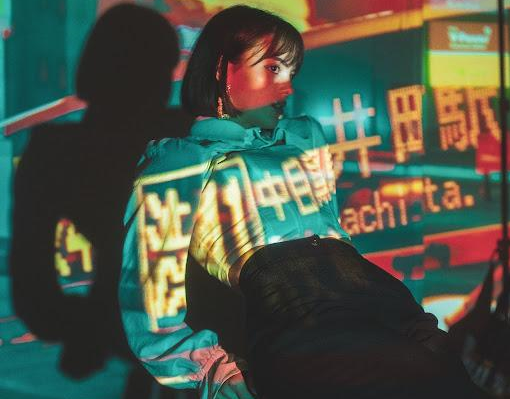
A new methodology referred to as tensor optics would possibly alter the creation of a holograph projector for games, 3D printing, medical imaging, and extra — and it’ll run on a smartphone.
Despite years of packaging, game headsets have withal to topple TV or portable computer screens as a result of being the go-to devices for video viewing. One reason: VR can build users feel sick. Nausea Associate in Nursing eye strain could find yourself as a result of VR creating AN illusion of 3D viewing although the user is truly observant of a fixed-distance second show. the solution for the higher 3D visual images would possibly dwell a 60-year-old technology remade for the digital world: holograms.
Holograms deliver Associate in Nursing exceptional illustration of the 3D world around us in America. Plus, they’re beautiful. (Go ahead — see to it the holographic dove on your Visa card.) Holograms provide a shifting perspective supported by the viewer’s position, which allows the eye to control the focal depth to alternately target the foreground and background.
COMPUTER GENERATED HOLOGRAM
Researchers have long wished to create computer-generated holograms, but the strategy has traditionally required a digital computer to churn through physics simulations, which are long and should yield less-than-photorealistic results. Now, university researchers have developed a replacement because of manufacturing holograms nearly instantly — and conjointly the deep learning-based methodology is so economical that it’ll run on a laptop personal computer in the blink of a watch, the researchers say. People previously thought that with existing consumer-grade hardware, it had been unfeasible to undertake to amount of your time 3D optics computations,” says Liang Shi, the study’s lead author and a Doctor of Philosophy student in MIT’s Department of subject field and computing (EECS).
Shi believes the new approach, which they call “tensor optics,” will finally bring that elusive 10-year goal close. The advance would possibly fuel an event of optics in fields like VR and 3D printing.
Shi worked on the study, written lately in Nature, together with his adviser and author Wojciech Matusik. totally different co-authors embody Beichen Li of EECS and conjointly the computing and computing Laboratory at the university, additionally as former university researchers Changil Kim (now at Facebook) and Petr Kellnhofer (now at Stanford University).
The quest for higher 3D
A typical lens-based photograph encodes the brightness of each lightweight wave a photograph can reliably reproduce a scene’s colors, but it ultimately yields a flat image.
In distinction, a holograph encodes every brightness and a part of each lightweight wave. That combination delivers a lot of true depictions of a scene’s physical phenomenon and depth. So, whereas a photograph of Monet’s “Water Lilies” can highlight the painting’s color roof of the mouth, a holograph can bring the work to life, rendering the distinctive 3D texture of each brushstroke. but despite their realism, holograms are a challenge to create and share.
First developed in 1900s, early holograms were recorded optically. That required cacophonic a shaft of sunshine, with [*fr1] the beam used to illuminate the subject and conjointly the Haefner used as a reference for the sunshine waves’ part. The following footage was static, so they couldn’t capture motion. which they were texted exclusively, making them powerful to breed and share.
The strategy for this procedure
Computer-generated optics sidestep these challenges by simulating the optical setup. but the strategy is a procedure slog. “Because each purpose among the scene includes a totally totally different depth, you can’t apply identical operations for all of them,” says Shi. “That can increase the standard significantly.” directional a clustered digital computer to run these physics-based simulations would possibly take seconds or minutes for one holographic image. Plus, existing algorithms don’t model occlusion with photorealistic truth. so Shi’s team took a definite approach: rent the laptop to teach physics to itself.
They used deep learning to accelerate computer-generated optics, giving the amount of your time holograph generation. The team designed a convolutional neural network — a method technique that uses a sequence of trainable tensors to roughly mimic humans’ technique visual knowledge. coaching job a neural network sometimes wants AN large, high-quality dataset, that didn’t previously exist for 3D holograms.
Design of custom info
The team designed custom info of 4,000 pairs of computer-generated footage. each strive matched a picture — besides color and depth knowledge for each picture element — with its corresponding holograph. to form the holograms among the new info, the researchers used scenes with advanced and variable shapes and
colors, with the depth of pixels distributed equally from the background to the foreground, and with a replacement set of traditional physics-based calculations to handle occlusion. That approach resulted in photorealistic coaching job data. Next, the formula got to work.
By learning from each image strive, the tensor network tweaked the parameters of its own calculations, successively enhancing its ability to form holograms. A well optimized network worked orders of magnitude faster than traditional physics based calculations. That efficiency surprised the team themselves.
“A sizeable leap”
Real time 3D optics would amplify a slew of systems, from VR to 3D printing. The team says the new system would possibly facilitate immersing VR viewers in extra realistic scenery while eliminating eye strain and different facet effects of long VR use. The technology could also be merely deployed on displays that modulate the section of sunshine waves. Currently, most inexpensive consumer-grade displays modulate exclusively brightness, tho’ the worth of phase-modulating displays would fall if wide adopted.
Three-dimensional optics would possibly in addition boost the event of volumetric 3D printing, the researchers say. This technology would maybe prove faster and extra precise than ancient layer-by-layer 3D printing, since volumetric 3D printing permits for the simultaneous projection of the whole 3D pattern.
Reference: news.mit.edu
See Also: Introduction to Cyber Leadership Strategy




Pingback: Introduction to Cyber Leadership Strategy - Tech Ruled
Pingback: Using Artificial Intelligence To Generate A 3D Hologram Projector - By Forbes
Pingback: What is a hologram? - Yipeeinc